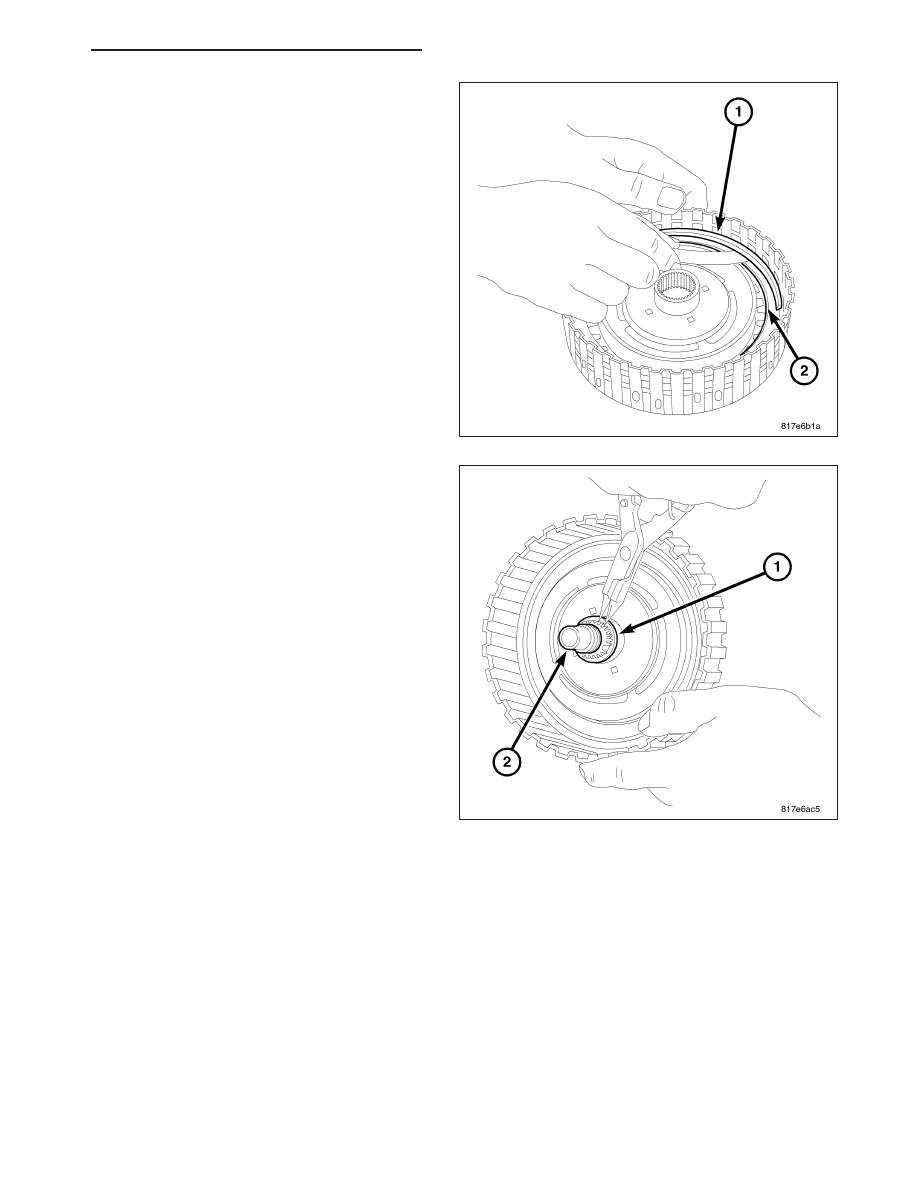Content .. 1277 1278 1279 1280 ..
Dodge Caliber. Manual - part 1279

CAUTION: When conducting measurements, mea-
sure two or more places and calculate the average
value. If clearance is beyond standard value,
replace the forward clutch assembly.
10. Measure the clearance between the snap ring (1)
and the retaining plate (2). the correct clutch
clearance is 1.2-1.5 mm (0.047-0.059 in.).
CAUTION: Do not expand the snap ring beyond
level required to install and do not deform it.
11. Install the input shaft (2) in the forward clutch
drum, and install the snap ring (1).
PM
AUTOMATIC - CVT-SERVICE INFORMATION
21 - 415